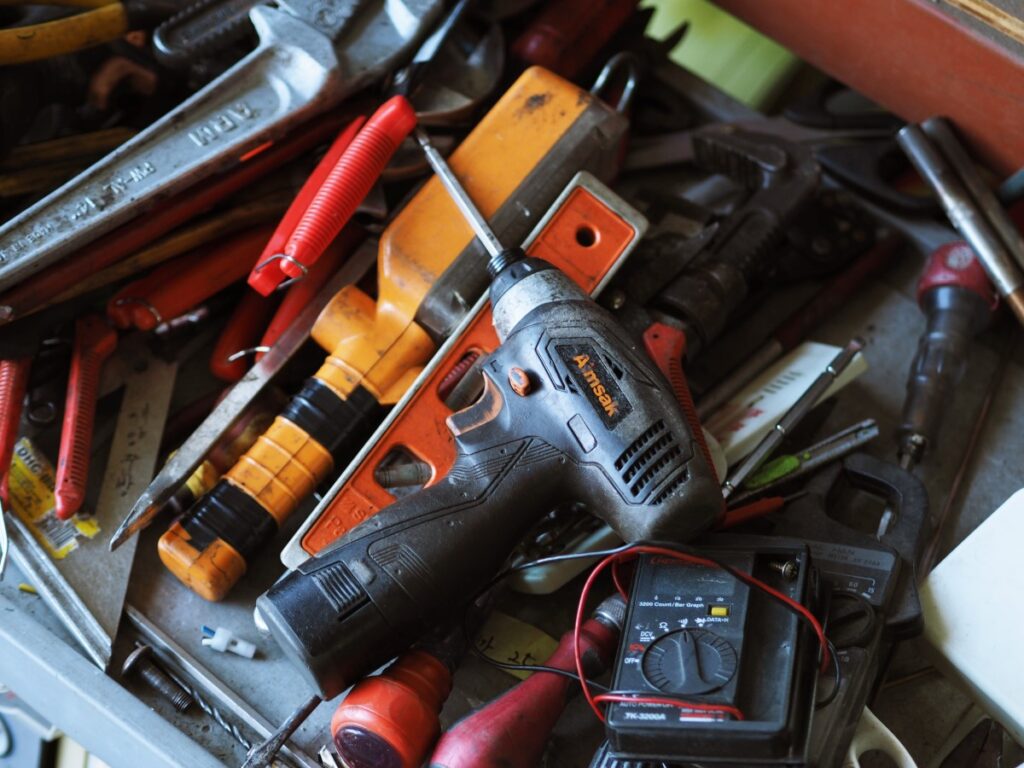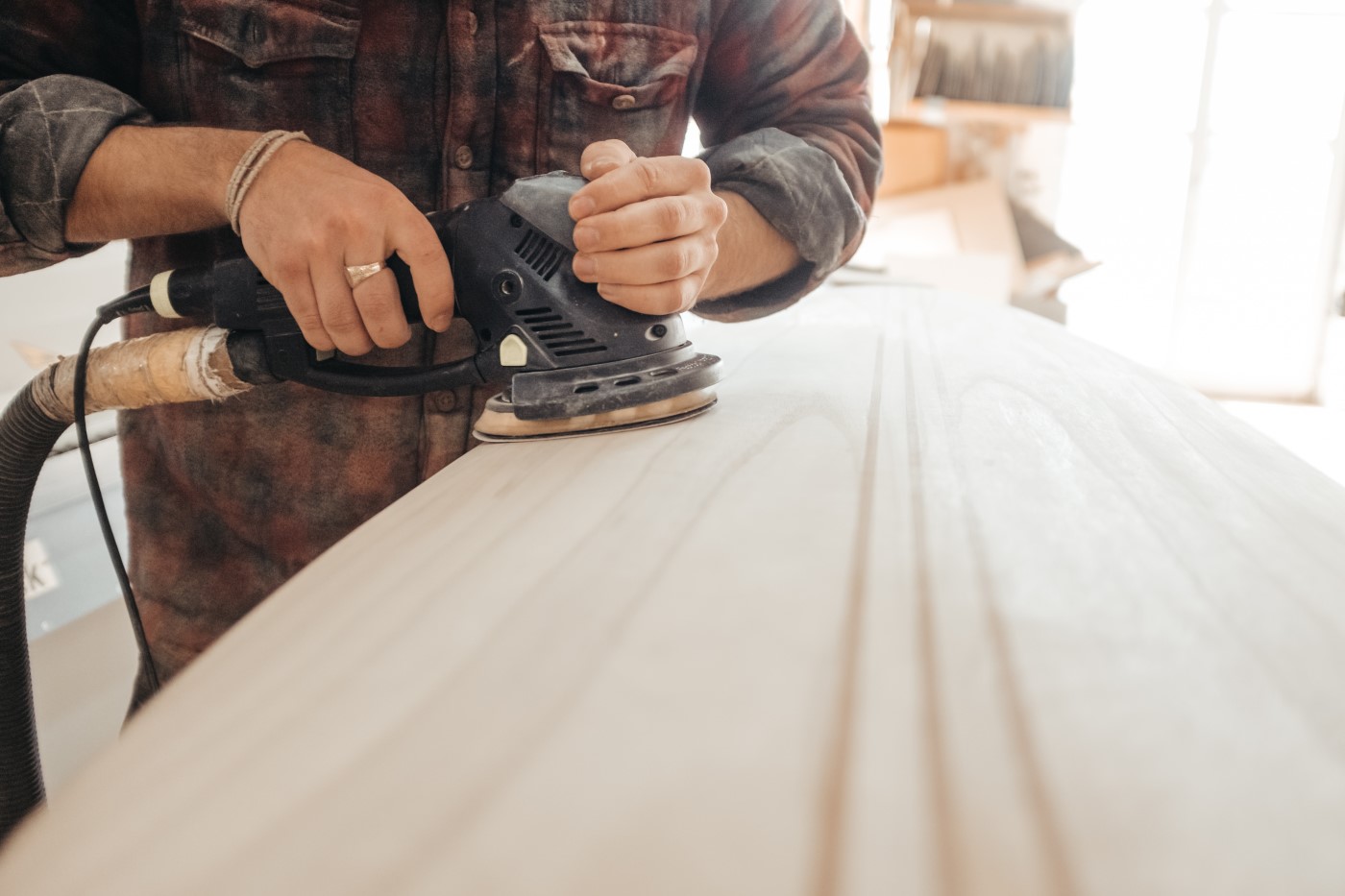Having your own power tools on hand at home gives you the flexibility to tailor household DIY and renovation projects to your needs and can save you money on projects overall. That being said, the cost of the tools themselves can certainly make a dent in your pocketbook. So, to keep costs affordable, make sure that you look after your power tools with regular care and maintenance. By extending the lifespan of your power tools you’re also helping the environment by reducing the need for resources to make new tools, a win-win! Read on for tips to keep your power tools working for longer!
Follow the Manufacturer’s Instructions
First off, we recommend reading the manual and any additional instructions provided by the manufacturer. Yes, it’s no one’s favorite task, but we assure you that reading the manual will pay off in the long run! Be aware, if you do not follow the manual, you risk voiding the warranty of your power tools. Below are some great general tips to keep your power tools working for longer, but please always take note of what the manufacturer says first!
We all know that manufacturers provide a user manual when you make a purchase, but did you know that some also have online resources with tips for using their tools? For example, Jet Tools has specific care and maintenance videos for their equipment (like bandsaws) available on YouTube:
Use the Correct Equipment for the Job
It’s key for both your own safety and the lifespan of your power tools that you use the right equipment for the job. Using an incorrect blade or drill bit can cause unnecessary wear and tear on the accessories and tool motor. Doing research to determine the correct oscillating tool blade, the correct drill bit, or even the correct drill for your project, will ensure that your accessories and power tools work for longer.
Sharpen Bits and Blades
Using a power tool with a dull blade or bit can cause extra stress on your tool’s motor, and will impact the performance of your power tool. Also, dull blades can increase operator fatigue and decrease the lifespan of the blades and bits themselves. Manufacturers generally recommend sending their products to a professional sharpening service (remember those warranty considerations!). However, a variety of online resources do exist such as detailed instruction guides and YouTube videos to help you master sharpening at home with the right equipment.
Tighten Power Tool Bolts and Screws
This is a super easy one! With use over time, the bolts and screws keeping your power tool together can loosen. Regularly check to ensure mounting screws are tightened to prevent malfunctioning and ensure the tool is working efficiently.
Clean Power Tools After Each Use
It may be tedious but a 2-minute clean can go a long way in prolonging the life of your power tools. Wiping the tool clean with a soft cloth after each use will prevent dust and grime from building up on the tool’s surface and prevent it from making its way into the tool’s internal mechanical parts. It also helps to do an occasional deep clean with a damp cloth and compressed air (for those hard-to-reach parts) to ensure that dirt and other impurities do not cause mechanical issues. Do not use bleach, chlorine, or paint thinner to clean the plastic parts of your tools as they can damage them.
Store Carefully
To keep your power tools working for longer, store them in a cool dry place since moisture will corrode the electrical components and break down the body of your tools. Storing them next to silica gel packs is a good way to ensure that moisture does not damage your tools. Did you know, the purpose of having silica gel packs in many of the things you buy is for the silica to absorb and hold moisture?
Storing your power tools in their original cases is also important. Leaving your tools out in the open while you complete other projects within the same area can cause dust and moisture to build up inside, even if you do not use the tool for that particular project. Also, your tools are more likely to sustain damage or have parts misplaced if they are dumped loose in a drawer with a bunch of other tools or workshop supplies.

Lubricate Power Tools as Instructed
The moving parts of your power tools may need to be lubricated regularly (although not all power tools require lubrication after purchase). Learn how to correctly lubricate your tool by reading the instructions detailed in the tool’s manual from the manufacturer. Proper lubrication prevents overheating, corrosion, and chafing of your tools. Ensure you use only the type of lubricant recommended by the manufacturer (take special note: WD 40 is not a one size fits all solution for lubrication) and closely follow the manual’s instructions. If you no longer have a hard copy, many manufacturers post owner’s manuals for their tools on their websites. You can also reach out to the manufacturer if an older tool’s manual cannot be found, or search online Manual Libraries.
Repair with Replacement Parts
If one part of your power tool fails, try sourcing a replacement part for it. You can save money by not having to buy a whole new tool and this will also prevent the tool from ending up in our recycling pile! Check with the manufacturer to see if they sell replacement parts. Alternatively, they may be able to direct you to a local or online store to purchase the part.
Look after Power Tool Batteries
Although tool batteries generally are replaceable, the cost of a new battery can be high. To get the longest life from your batteries, store them where the temperature remains the same. Here are some useful tips from FamilyHandyman.com on how to keep your Lithium-ion tool batteries working for longer:
- Li-ion batteries can handle only 800 to 1,000 charges. Don’t recharge a battery if you’ve used it for just a few minutes.
- Store batteries where the temperature remains the same, so don’t leave them in the car—either in the cabin or the trunk. High heat and subzero cold can reduce battery life.
- Storing a battery in direct sunlight can really heat it up, so shield it from the sun.
- If you’re not going to use your battery for a while, give it a full charge and then store it. Do not let it be stored for long periods of time on a charge that is 50% or less.
Beyond Repair? Recycle it!
Lastly, despite careful maintenance and repairs, if your power tool stops working for good we can recycle it! ElectroRecycle accepts many types of handheld and freestanding power tools for recycling at collection sites across British Columbia! There’s a location near you to recycle power drills, circular saws, drill presses, and more including:

Use our Accepted Products search tool to check if your broken power tool is recyclable through our program.
For more tips on how to repair and maintain other small appliances in your home, read our blog posts:




Comments